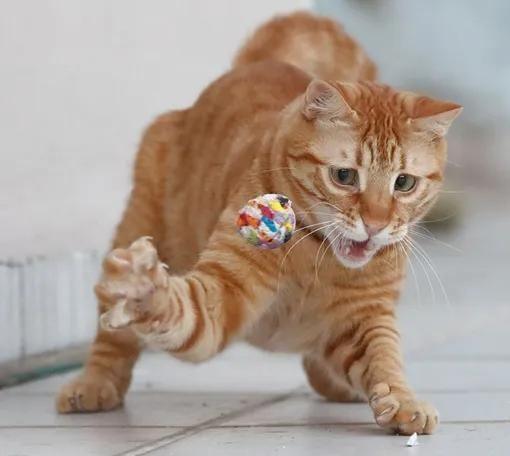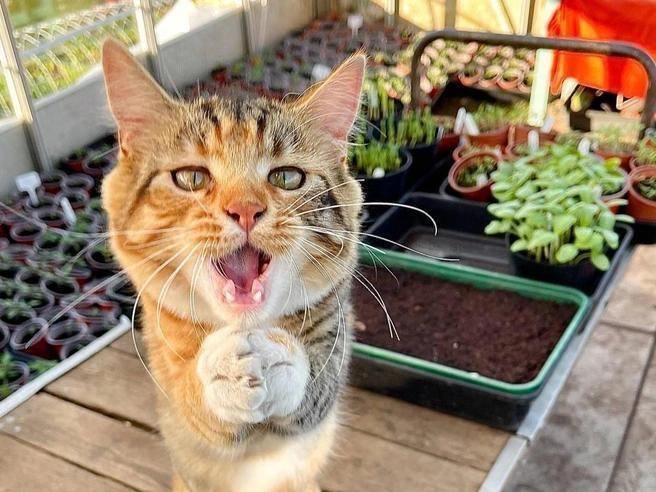Cats have long captivated our imagination: they are soft, graceful, independent... and at the same time, sometimes they do such ridiculous things that it is impossible not to watch them. But what is the basis of this “funny” behavior? Let's find out scientifically!
Introduction
Despite thousands of years of domestication, cats retain many of the traits of their wild ancestors. These traits often manifest themselves in unexpected behavior that we perceive as “ridiculous.” To understand its nature, you need to consider several aspects at once:
- Evolutionary and genetic roots
- Features of physiology and anatomy
- Neurobiological mechanisms
- Social and emotional state
- Environmental influence and human interaction
1. Evolutionary and genetic roots
The cat is a predator that over millions of years has adapted to a secretive hunting lifestyle. Many of those “absurdities” are actually residual manifestations of instincts:
- Sudden jerking and running around the house . In the wild, a hunter often stalks and then quickly attacks the prey. In an apartment, toys, dust or one’s own shadow become victims.
- Deep squat with ears laid flat . This is a waiting pose - the cat is preparing to jump. Sometimes he sits like that, as if he's tracking something.
- Playing with trash and small objects . The owner may call this ridiculous, but for the cat this is a training quest to practice grasping and grasping-crushing movements.
2. Features of physiology and anatomy
The cat has an amazing skeleton, muscles and sensory organs:
- Flexible spine . Allows you to do impressive stretches and crunches. It seems to us that he was rolling on the floor “out of boredom,” but in reality he was testing his dexterity.
- Narrow claws . They can suddenly pop up when the cat is excited or joyfully greets the owner. For us these are “scratch attacks”, but for him they are a manifestation of emotions.
- Developed vestibular nucleus . Cats easily maintain balance even on a narrow surface. But during games, they may fall unusually, hit walls and objects - this is not always due to clumsiness, but to testing their boundaries.
3. Neurobiological mechanisms
A cat’s behavior is largely determined by the functioning of the brain and hormonal levels:
- Peaks of activity at night and early morning . The cat's circadian rhythm is shifted: the peak of vigor occurs during hunting in the wild - at dusk. The owners perceive this as “frantic night activity.”
- Stress hormones and dopamine . During play or hunting, dopamine, the “pleasure hormone,” is released in the cat’s brain. That's why they repeat ridiculous pirouettes over and over again.
- Quick reaction reflexes . Dexterity and instant reactions save the life of a predator, but in an apartment they look like “senseless” lunges, jumps and somersaults.
4. Social and emotional state
Despite their reputation as loners, cats have complex emotional lives:

- Need for attention . Sometimes they deliberately perform “wrong” actions (for example, knocking over a vase or getting stuck in narrow places) in order to get a reaction from the owner.
- Anxiety with change . Moving, renovation or new furniture - all this is stressful, and the cat can “go crazy”: throwing objects, meowing loudly, running along the corridors.
- Boredom and lack of stimulation . Without toys or climbing strips, cats look for activity anywhere - and it often looks like awkward dances across the floor.
5. Influence of the environment and interaction with humans
Humans have long influenced the behavior of cats:
- Toys and toy mice . Simple fur mice or a laser pointer seem like living objects to a cat. He rushes at them, hides and ambushes them.
- Unpredictability of host reactions . If you constantly respond with a loud exclamation or clap, the cat will “act out” scenes, testing your level of involvement.
- Comfortable beds and drawers . Cats eagerly explore any new object, climb into boxes and suddenly fall out - for us it looks like a comical selfless extravaganza.
Conclusion
The “ridiculous” behavior of cats is far from just a funny show. This is the result of a whole complex of evolutionary, physiological, neurobiological and social factors. When we understand that behind every unexpected jump or impetuous run are hidden the instincts of a hunter, the subtle functioning of the senses and a complex emotional background, we begin to look at the “absurdities” of our pets differently - with admiration and understanding.
Advice for owners: Provide your cat with regular playtime, a variety of toys, and quiet places to rest. Interact with him, taking into account his biological rhythms. Then there will be fewer absurdities, and more harmony and joyful moments!


I really enjoy the variety of topics covered here. Keep up the great work!
Anthony Lee
Published, 11.15.2025